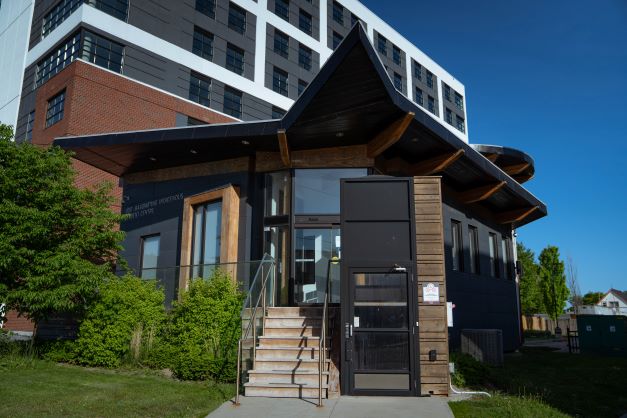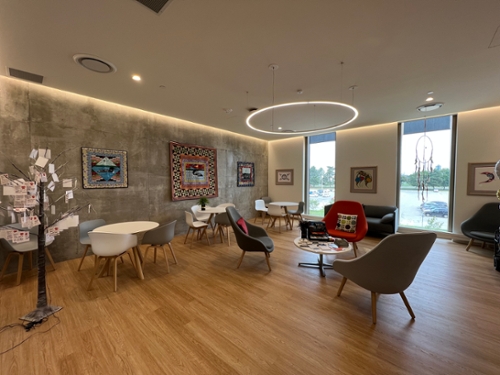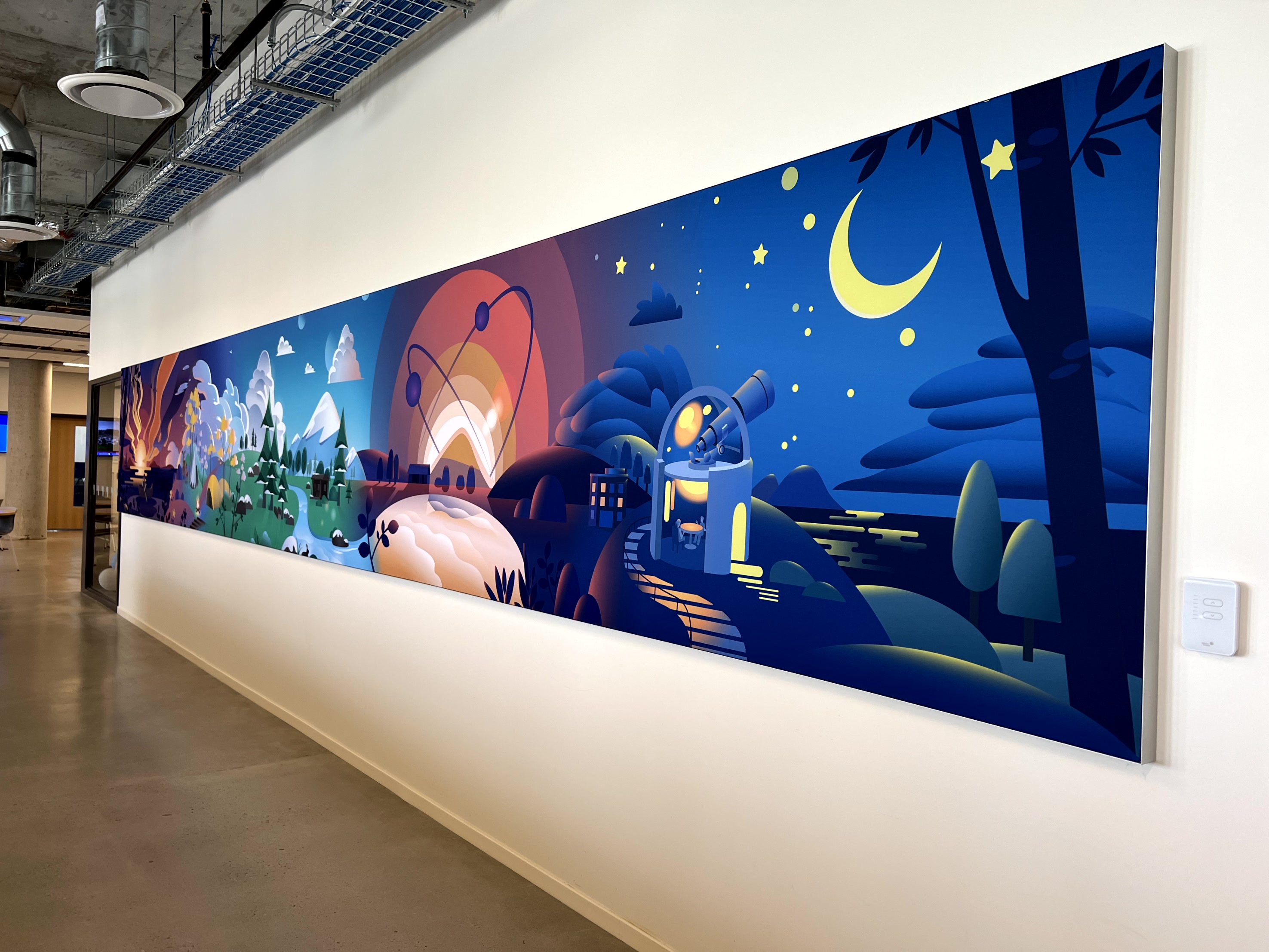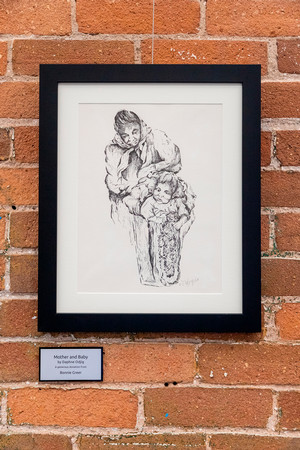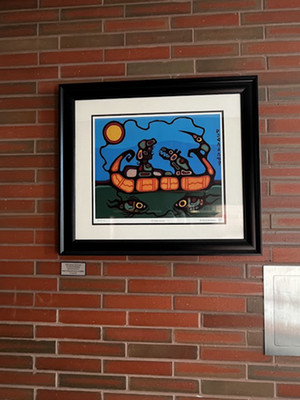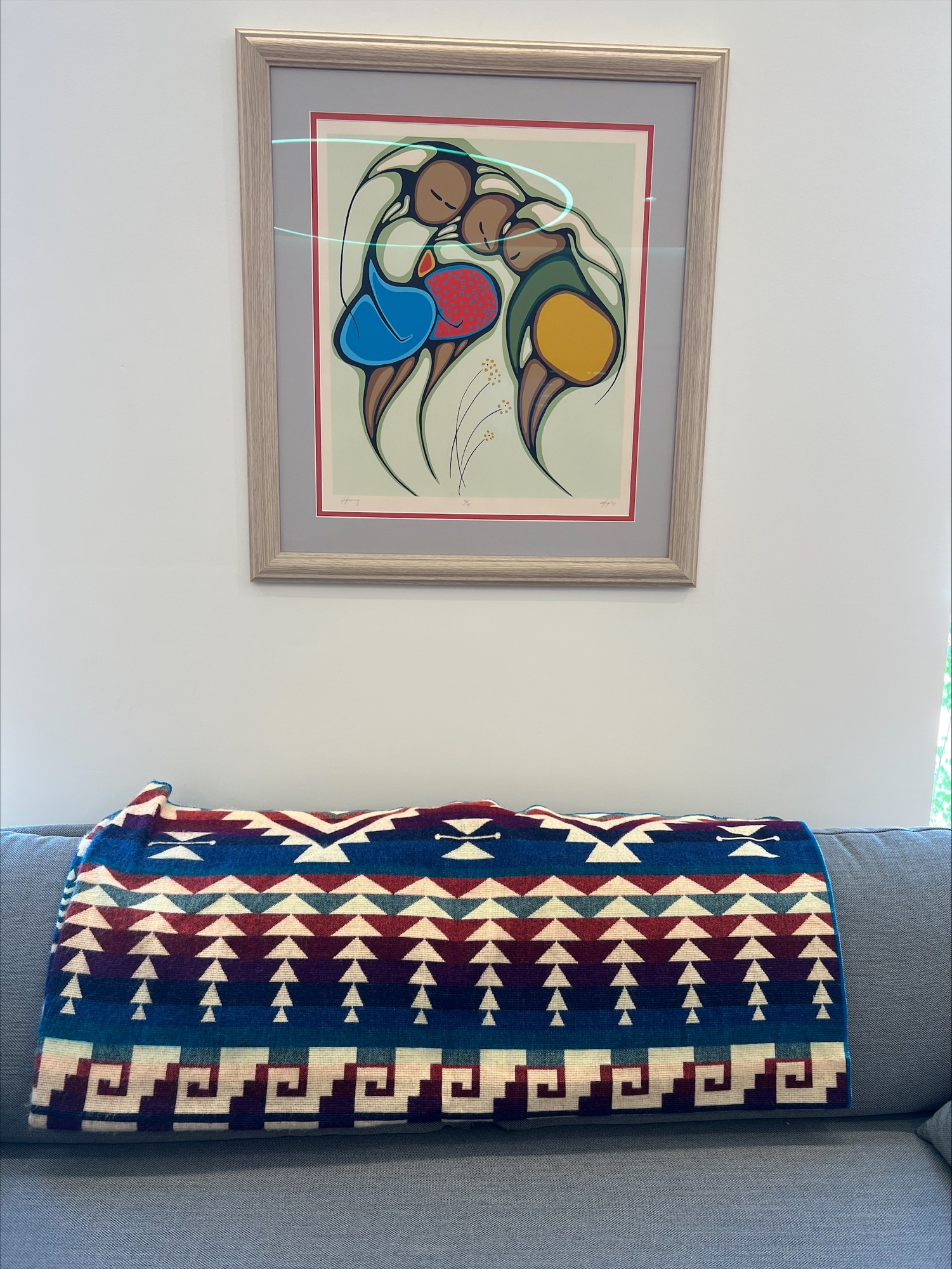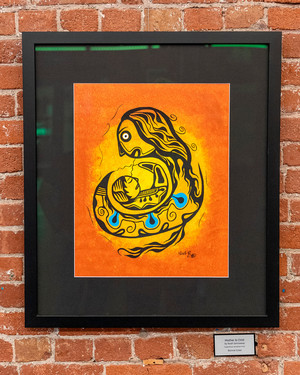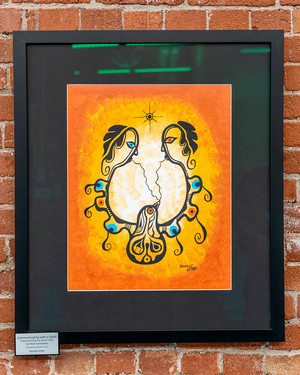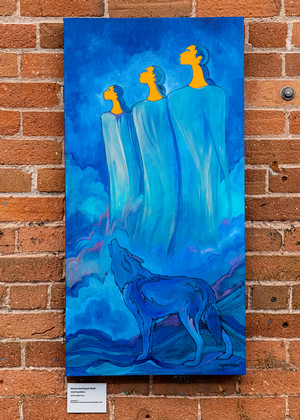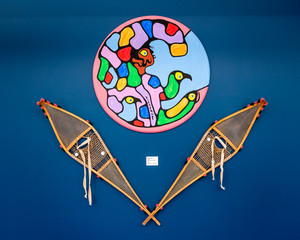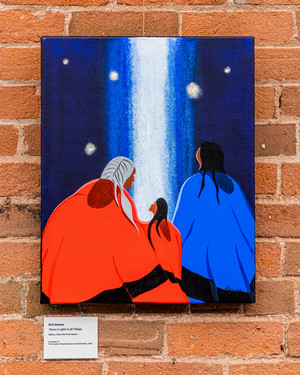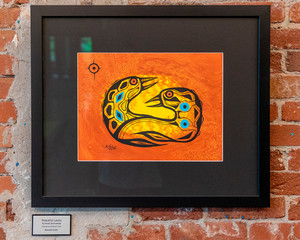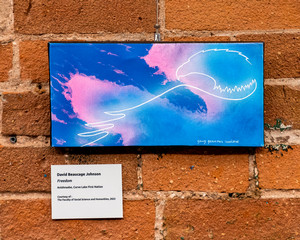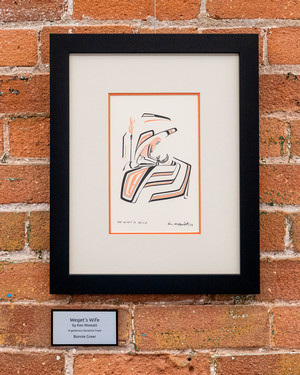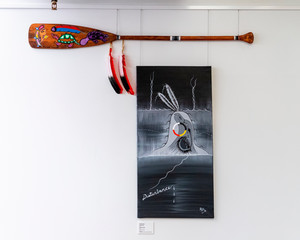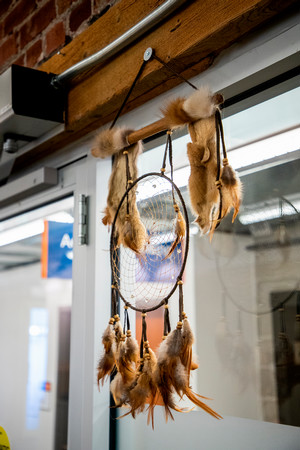Indigenous Spaces on Campus
A safe and welcoming environment for Indigenous students and home to Indigenous Education and Cultural Services. Engage in learning through Indigenous artistic representation featured across campus.
-
151 Athol St. East at the downtown Oshawa campus location.
- Baagwating is Anishinaabemowin (Ojibwe word) for Place of Shallow Waters. The student centre is named in recognition of the Baagwating Community Association and Mississauga of Scugog Island for their financial contribution and generosity to the creation of this space for the campus community and Indigenous community members.
- Baagwating Indigenous Student Centre is a smudge-friendly inclusive student space designed as a home away from home for Indigenous students. The Centre features culturally-relevant resources, a full kitchen, student study space, a resource room and a sitting room complete with a fireplace.
- Mukwa’s den is located in Shawenjigewining Hall, Room 217 at the north Oshawa campus location.
- Mukwa is Anishinaabemowin (Ojibwe word) for bear. The bear holds significance to most Indigenous cultures as the protector and symbol of bravery from the Seven Grandfather Teachings. We acknowledge the bravery and courage of Indigenous students, as many have left home for the first time, often coming from remote communities that have historically had negative experiences with the education system.
- Mukwa’s den is a designated student space for Indigenous students to access culturally-relevant resources, support and programming and be an additional study space and/or lounge.
- The room features artwork by Alice Williams, tables and chairs for workspace, couch and chairs for your comfort, medicines, self-identification information and educational resources.
- Indigenous students at Ontario Tech can request a proxy card to access the space throughout the duration of their studies at Ontario Tech. Email indigenous@ontariotechu.ca for more information.
The university features a number of Indigenous artists across campus. You can view a large collection in Charles Hall at our downtown Oshawa campus location or take a virtual tour! In partnership with Oshawa Tourism you can view the art in Charles Hall by downloading the Oshawa Tourism SmartGuide app. Search for Ontario Tech University – Charles Hall Indigenous Art Tour to get started.
We also have a number of pieces featured in Shawenjigewining Hall, Mukwa's Den and the North Oshawa Library that you can view in person.
Some pieces were donated by Bonnie Greer, who was a teacher for many years in Northern Ontario.
These pieces include works by:
-
Daphne Odjig: One of Canada’s most celebrated Indigenous painters and printmakers. Odjig mixes traditional Indigenous styles and imagery with Cubist and Surrealist influences. Through her work, she has addressed issues of colonization, the displacement of Indigenous Peoples, and the status of Indigenous women and children, bringing Indigenous political issues to the forefront of contemporary art practices and theory.
-
Ken Mowatt: Known as one of the most creative and experimental First Nations’ artists. He works in diverse art forms, including limited edition prints, original paintings in oils, drums, jewelry, cedar poles, masks, rattles, and sculptures. He illustrated the children’s book Returning the Feathers, which is based on five famous Gitksan legends.
-
Noah Sainnawap: His unique abstract style and blending of Woodland references in his artwork, make his paintings truly unique. Sainnawap began to explore his artistic inclinations at the age of 16, through portraiture and landscapes. His northern life and nomadic wanderings took him across Canada. His paintings can be signed Noah Sainnawap or Noah Brown. He also used Cree Syllabics, and earlier works may have his identifier, which resembles the number 6.
You can also view a number of other Indigenous artworks by artists:
-
Freddy Taylor: An Ojibwe artist originally from Curve Lake. He was forced to attend the former Mohawk Institute Residential School in Brantford, Ontario, for 10 years. During his time there, his name was replaced by a number, he lost his language and his culture, and his hair was cut short. Taylor finds healing through art, which he says comes from the Creator. He designs Every Child Matters t-shirts, and proceeds are donated to the Save the Evidence campaign.
-
Norval Morrisseau: An Ojibwa artist who created the pictographic style, commonly referred to as the Woodlands School, legend painting, or x-ray art. This style is a fusion of European easel painting with Ojibwe Midewiwin Society scrolls and pictography of rock paintings. His art was first exhibited in 1962 at the Pollock Gallery in Toronto and was the first time an Indigenous artist broke through the Canadian professional white-art barrier.
-
Maxine Noel: Born in Manitoba on the Birdtail Reserve, Maxine Noel is Santee Oglala Sioux. To make her art, Noel uses painting, drawing, printmaking, serigraphy or silk screen printing, etching, stone lithography, cast paper and limited-edition bronze castings. Noel signs her artwork with her Sioux name Ioyan Mani, which translates as Walk Beyond.
-
David Beaucage Johnson: David Beaucage Johnson’s works are diverse in medium: flint, wood, stone, and leather; paintings on canvas and paper, including abstract and life drawing; photography; and serigraphy. He lives in Mshkiigomaang (Curve Lake) and, in his own words, has been influenced by “12,000 years of local artistic expression in the Kawarthas.”
-
Rick Beaver: Rick Beaver brings his formal training as a wildlife biologist into his art to honour and protect the earth. His art uses vibrant colour and lines to create motion. His work highlights wildlife, native lifestyles, and dynamic landscapes and is created using gouache (opaque watercolor) or acrylics. His work is inspired by the Rice Lake area, where he is still engaged as a biologist and artist.
